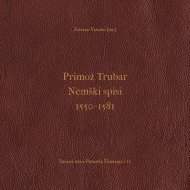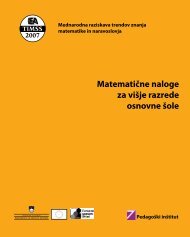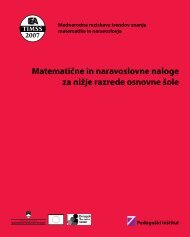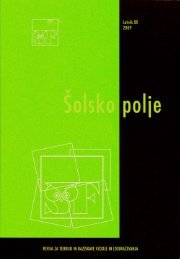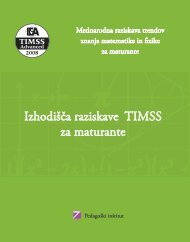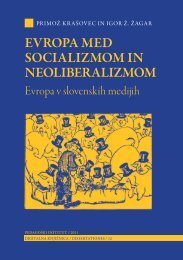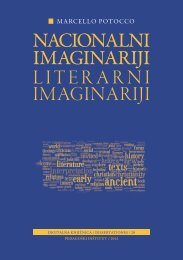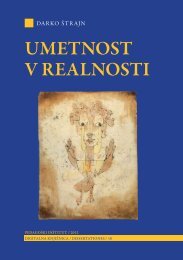Šolsko polje, letnik XX, številka 5-6, 2009: Vloga ... - Pedagoški inštitut
Šolsko polje, letnik XX, številka 5-6, 2009: Vloga ... - Pedagoški inštitut
Šolsko polje, letnik XX, številka 5-6, 2009: Vloga ... - Pedagoški inštitut
Create successful ePaper yourself
Turn your PDF publications into a flip-book with our unique Google optimized e-Paper software.
TOPOI IN CRITICAL DISCOURSE ANALYSIS517. Topos of the EU as a national necessity8. Topos of the EU as a national test9. Topos of the organic work10. Topos of Polish pragmatism and Euro-realismTopoi in the European corpusTopos of diversity in EuropeTopos of European history and heritageTopos of European valuesTopos of European unityTopos of Europe of various speedsTopos of core and peripheryTopos of European and national identityTopos of Europe as a Future OrientationModernatisation toposTopos of the Polish national mission in the European UnionTopos of joining the EU at any costTopos of preferential treatment.How these topoi were »identified«, and what makes them »the topoi« (notjust simply »topoi«), we don’t get to know; Krzyzanowski just lists them assuch. Is there another list that helped them identify? If so, it must be verydifferent from the lists we have just mentioned. Maybe there are severaldifferent lists? If so, who constructs them? When, where, and especially,for what purpose and how? Is there a kind of a grid, conceptual orin some other way epistemological and/or methodological that helps us/them do that? If so, where can we find it? And how was it conceptuallyconstructed? And if there isn’t any grid, how do we get all these (different)lists of topoi? By casuistry, intuition, rule of a thumb? And when we (finally)do get those lists, do they ever change (and how), or are they hereto stay (and why)? Are they universal, just general, or maybe only contin-



